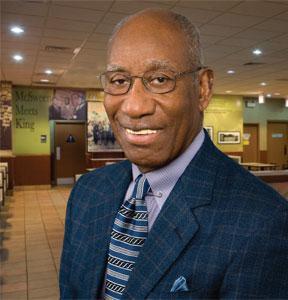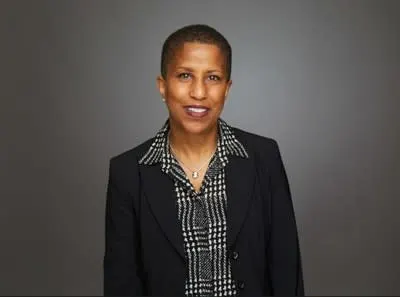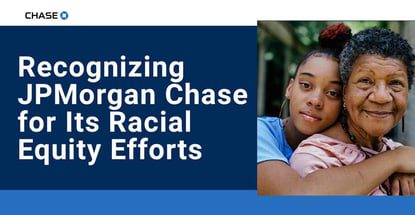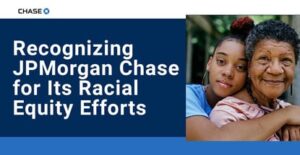The life insurance industry in the U.S. is vast, taking in billions of dollars in premiums each year. Here we’ll break life insurance statistics down into meaningful segments.
Life Insurance Stats at a Glance
The life insurance industry in the U.S. is vast, taking in billions of dollars in premiums each year. Here we’ll break life insurance statistics down into meaningful segments.
Life Insurance Stats at a Glance
According to results from a Forbes Advisor survey on life insurance, at least three in four American adults have some form of life insurance.[1]
Women (22%) are twice as likely as men (11%) to lack life insurance.[1]
Forbes Advisor survey respondents were commonly unaware that certain aspects of personal history—unrelated to health—are considered by insurers when determining an individual’s life insurance quote:
Only 35% of respondents knew that driving records are usually considered.
33% knew criminal history could be considered.
29% knew credit history could be considered.
23% knew a current bankruptcy is often considered.[1]
Almost 60% of respondents to a Forbes Advisor survey on marijuana and life insurance indicated they’d have reservations about applying for life insurance if they legally used marijuana.[2]
More than half (56%) of respondents indicated they would not respond honestly to questions about marijuana use in order to sidestep higher life insurance quotes.[2]
Many Americans view life insurance as a means of protecting their families from unpaid debt. White respondents (64%) to a Forbes Advisor survey were much more likely to indicate this view than Black respondents (37%).[3]
A relatively small number of Americans view life insurance as a means of passing down generational wealth. Black respondents (22%) were nearly three times as likely as white respondents (8%) to indicate this view.[3]
Eight out of 10 consumers overestimate the expense of getting a life insurance policy, according to a study by LIMRA and Life Happens.[4]
Fewer than half of people without life insurance surveyed in this study say they feel financially secure. The same survey found that 68% of life insurance owners say they do feel financially secure.[4]
This feeling of financial security rises to 78% when a consumer has both employer-based and individual life insurance policies, according to the Insurance Information Institute.[5]
The number of Americans who believe they don’t have enough life insurance has more than doubled since 2010.[5]
44% of American households would encounter significant financial difficulties within half a year if they lost the primary wage earner in the family, and 28% would reach this point in only a month.[6]
How Many People Have Life Insurance?
Knowing what percentage of Americans have life insurance and from where can be helpful in making personal decisions.
The percentage of Americans with life insurance is about 52%, including individual and workplace life insurance, according to LIMRA.[8]
106 million American adults do not believe they have adequate life insurance coverage, according to the 2022 Insurance Barometer Study conducted by LIMRA and Life Happens.[5]
Fewer than one in five adults surveyed by Forbes Advisor are covered by both employer-based life insurance and a personal life insurance policy, with little difference between men and women within this category.[1]
About one in four American adults surveyed is covered solely by an employer-based life insurance policy. This describes about one in three American men but only about one in five American women.[1]
Approximately one in three American adults surveyed are covered solely by an individual policy unrelated to their employer, with little difference between men and women within this category.[1]
Nearly one in five (17%) American adults surveyed have neither employer-based nor individual life insurance.[1]
The percentage of American adults without life insurance varies considerably by demographic. For example:
22% of American women surveyed lack life insurance, compared to only 11% of American men.
64% of Americans aged 58 and older surveyed lack life insurance, compared to only 9% of Americans aged 18 to 25.[1]
The percentage of Americans who have term life insurance decreased to 48% in 2019 from 52% in 1998. But the median face value rose to $110,000 from $60,000 during the same period.[7]
The percentage of Americans who have cash value life insurance policies dropped to 20% in 2019 from 30% in 1998. At the same time, the median face value increased from $45,000 to $50,000.[7]
Life Insurance Ownership Among Men vs. Women
Many differences become visible when life insurance ownership data is broken down by gender. Americans identifying as male and female experience some important aspects of life insurance differently.
Roughly six in 10 men own life insurance, while for women it’s less than one in five.[8]
Life insurance ownership by women is on the decline. The number has decreased for the past five years in a row.[8]
In 2020, more than 18 million American women—about 14%—lost their life insurance coverage. Of these women, 36% cited losing their job unexpectedly as the reason for losing coverage.[8]
About four in 10 men describe themselves as being very knowledgeable about life insurance. For women, this figure is about two in 10.[8]
Men are about 10% less likely than women to cite paying for burial expenses as a major reason for having life insurance.[8]
Men are about 10% more likely than women to view life insurance as a supplement for retirement income.[8]
Survey data from LIMRA indicates about a third of American women planned to buy life insurance within the next year. Almost half of underinsured or uninsured women say they need more life insurance.[8]
State Breakdown of Life Insurance Ownership
Life insurance ownership can vary considerably across state lines, too, according to the American Council of Life Insurers.
Black Ownership of Life Insurance
Many life insurance statistics also vary considerably across racial demographics. Details about life insurance ownership among Black Americans provide an interesting contrast from overall coverage data.
In 2021, 56% of Black Americans owned a life insurance policy.[8]
Among insured Americans, Black individuals (66%) are on average more likely to cite covering burial costs and final expenses as their main reason for buying life insurance than the overall population (48%).[8]
Black Americans are also on average more likely to cite social media as a source of financial information. Facebook, YouTube and Instagram were the most commonly cited platforms.[8]
Black Americans are on average more likely to report interest in using a financial professional but are no more or less likely than average to use one.[8]
Many life insurance owners say they wish they’d purchased life insurance sooner. Among Black Americans, this figure is 51%.[8]
Some Americans report valuing life insurance as a way to pass along generational wealth. Among Black respondents to a Forbes Advisor survey, this figure is 22%, nearly three times as high as that of white respondents (8%).[3]
More white (64%) than Black (37%) survey respondents cite wanting to shield their families from unpaid debt as the purpose of life insurance.[3]
The median coverage amount for white Americans with life insurance ($150,000) is three times higher than that of Black Americans ($50,000).[3]
Americans overall, but especially Black Americans, overestimate how expensive life insurance is. Among those without life insurance, Black Americans surveyed by LIMRA assumed the cost of coverage to be 30% higher than white Americans asked the same question.[8]
Life Insurance Buying Statistics
In the event of losing a primary wage earner, nearly half (44%) of American households would encounter significant financial difficulties within six months. More than a quarter (28%) would reach this point in only one month.[6]
Among Americans who have life insurance, roughly 70% indicate they’d still feel financially secure if the primary wage earner were to pass away. However, only about half of Americans who lack life insurance indicate they’d feel financially secure in this circumstance.[6]
Among Americans who say they feel “very” or “extremely” knowledgeable about life insurance, more than 60% have coverage. However, among those who say they don’t feel knowledgeable about life insurance, fewer than 20% have life insurance.[6]
While having life insurance is common, simply having a policy doesn’t necessarily equate to adequate coverage. In total, it’s estimated that more than 100 million Americans are either underinsured or completely uninsured.[8]
Simplified underwriting, or simplified issue life insurance, allows Americans to get approved for a policy more quickly and easily (for one, it forgoes a medical exam) but carries certain drawbacks as well. Roughly half of Americans would be more likely to seek life insurance coverage if simplified underwriting were used.[8]
Among the younger generations, members of Generation X are more likely (52%) to consider simplified issue life insurance than age groups (47%).[8]
How long would it be before your household would feel the financial impact if the primary wage earner were to pass away?
Why Consumers Buy or Don’t Buy Life Insurance
A wide variety of reasons may prompt people to decide whether or not to buy life insurance. Survey data indicate large numbers of Americans are likely to share one or more of a few most-common rationales for this decision.
Most common reasons cited for forgoing life insurance Most common reasons cited for buying life insurance
Cost (60%) Paying for burial and other end-of-life expenses (83%)
Not a financial priority (55%) Supplementing lost income from the death of primary wage earner (68%)
Uncertainty about life insurance; not sure how much or what type to buy (53%) Transferring wealth from one generation to the next (63%)
Source: LIMRA
How Much Do Life Insurance Companies Pay Out?
Life insurance companies paid out $78.4 billion to life insurance beneficiaries and $88.1 billion in annuity benefits in 2019. This follows an industry shift from traditional life insurance toward annuities. In 2021, annuities accounted for 48% of life/annuity premiums written.
How much a life insurance company pays out on a specific claim depends, of course, on the terms of the policy.
What Percentage of Life Insurance Policies Pay Out?
The lapse rate of life insurance policies (meaning the percent of policies that are terminated and don’t pay out) varies depending on how long ago the policy was purchased and the face amount of the policy. For example, lapse rates of all individual life insurance policies tend to be highest around year 1 and 2 at about 8% of policies, according to a report from LIMRA. This is likely due to buyers’ regret and/or further comparison shopping.
After years 1 and 2, life insurance lapse rates trend down to around 4%, then spike up to around 7.5% in year 10. After that lapse rates generally trend downward again.
What Is the Life Insurance Market Size?
Insurance is a trillion-dollar industry in the United States, and the life insurance sector is one of its largest and most important components. Life insurance and annuities were responsible for nearly half of the American insurance industry’s net premiums in 2021. (Annuities are on the rise and are now a bigger moneymaker for life insurance companies than traditional life insurance).
Revenues taken in from life insurance premiums are on the rise overall, up by more than 10% from 2020 to 2021.
Revenue from life insurance premiums
2017 2018 2019 2020 2021 Percent change 2020-2021
$137.1 billion 145.1 billion $151 billion $143.1 billion $159.5 billion 11.5%
Source: Insurance Information Institute
Covid-19 and Life Insurance
The Covid-19 pandemic has impacted some perceptions and realities of the insurance industry, particularly the life insurance industry. Here are some of the details.
The pandemic made American consumers consider life insurance more seriously, according to survey data from LIMRA. About 30% of respondents indicated the pandemic made them more likely to buy life insurance. About 60% reported a “heightened awareness” of the value a life insurance might provide.[8]
Millennials (45%), Black Americans (38%), men (33%) and those making more than $150,000 per year (42%) were the demographics in which the pandemic was the biggest motivator for buying life insurance.[8]
Just under half (42%) of respondents who contracted Covid-19 now say they are more likely to purchase life insurance as a result.[8]
15% of respondents in a Forbes Advisor survey strongly believe unvaccinated people should pay more for life insurance due to vaccination status. More than twice as many respondents (33%) strongly disagree with this idea.[9]
63% of survey respondents correctly believe life insurance will pay to cover a Covid-caused or Covid-related death. Some respondents (12%) said, incorrectly, that they believe insurers can deny claims if they are for a Covid-related death.[9]
The increase in life insurance claims resulting from the pandemic has not substantially impacted the bottom line for life insurers, yet 20% of survey respondents believe life insurance companies are struggling financially due to the impacts of Covid-19.[9]
Covid-19 more likely to influence young men, young adults to get life insurance
Have you considered buying life insurance due to Covid-19?
Men vs. Women
By Age
What Factors Do Americans Think Should Impact Life Insurance?
A Forbes Advisor survey indicates that about seven in 10 Americans believe having poor credit should not lead to higher life insurance quotes. One in five survey respondents “strongly disagreed” with this method of pricing.[9]
Nearly six in 10 believe regular users of marijuana should not have to pay higher premiums as a result.[9]
Less than a quarter of respondents believe that criminal history should play a role in quoting life insurance.[9]
Only about two in 10 Americans think driving records should not play a role in life insurance rates. Nearly six in 10 do believe that it’s reasonable for risky drivers to pay higher premiums.[9]
A bit more than half of Americans (51%) believe that hobbies perceived to be dangerous, like skydiving, should lead to higher life insurance premiums.[9]
15% of respondents strongly believe that Americans who are not vaccinated for Covid-19 should pay higher premiums. One in three disagree that unvaccinated people should pay more.[9]
About five in 10 Americans surveyed report not having any life insurance or lacking sufficient coverage.[9]








